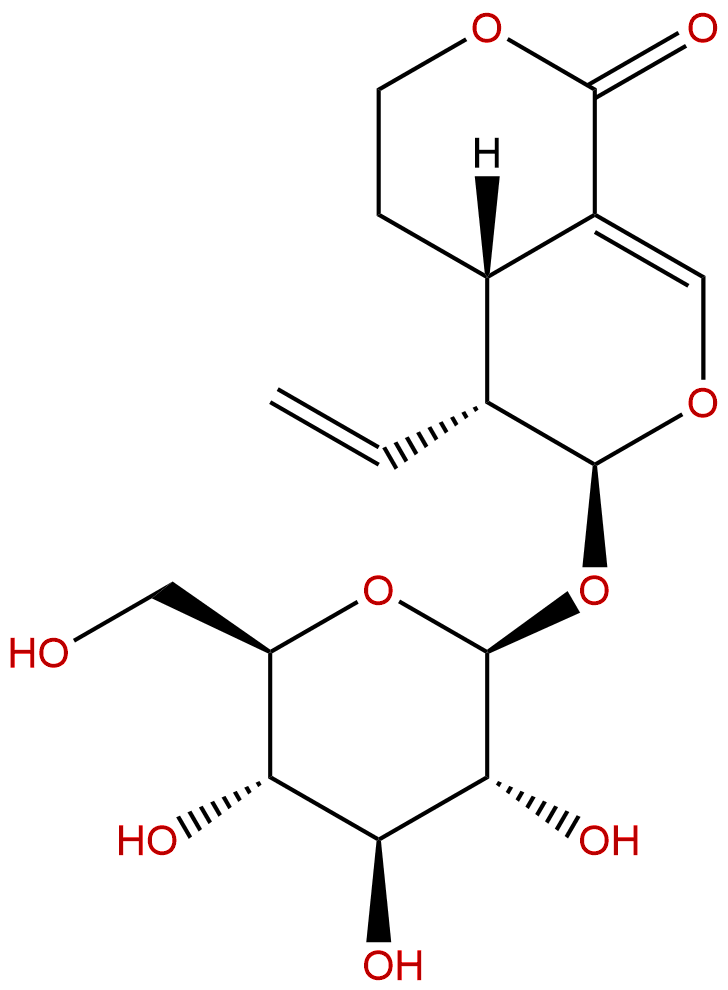Sweroside Descrtption
Product name: Sweroside
Synonym name:
Catalogue No.: BP1348
Cas No.: 14215-86-2
Formula: C16H22O9
Mol Weight: 358.343
Botanical Source: Swertia japonica, Tabernaemontana psorocarpa, Centaurium spicatum and Gentiana rhodentha
Physical Description: Powder
Type of Compound: Iridoids
Purity: 95%~99%
Analysis Method: HPLC-DAD or/and HPLC-ELSD
Identification Method: Mass, NMR
Packing: Brown vial or HDPE plastic bottle
Storage: Store in a well closed container, protected from air and light. Put into refrigerate or freeze for long term storage.
Whenever possible, you should prepare and use solutions on the same day. However, if you need to make up stock solutions in advance, we recommend that you store the solution as aliquots in tightly sealed vials at -20℃. Generally, these will be useable for up to two weeks.
The product could be supplied from milligrams to grams, up to kilograms
Inquire for bulk scale.
Descriptions:
Sweroside and swertiamarine are main constituents in Gentian (Gentiana lutea ssp. symphyandra), Gentian has wound healing activity, seems to be mainly due to the increase in the stimulation of collagen production and the mitotic activity by sweroside and swertiamarine , respectively; they also have cytoprotective effects, which may cause a synergism in terms of wound healing activity of Gentian. [1]
Sweroside has the anti-osteoporotic effect on the MG-63 cells and osteoblasts, it has a direct osteogenic effect on the proliferation and differentiation of cultured MG-63 cells and osteoblasts in vitro. [2]
Sweroside can inhibit potent melanogenesis in melan-a cells at 300uM without cytotoxicity, also decreases tyrosinase, tyrosinase-related protein-1 (TRP-1) and TRP-2 protein production in melan a cells, it may be an effective skin-whitening agent through the regulates the expression of MAP kinase and melanogenic enzymes. [3]
Sweroside and gentiopicroside suppress Pck1 expression and induce phosphorylation of components in the insulin signalling cascade, demonstrates that sweroside and gentiopicroside show insulin-mimicking effects on the regulation of Pck1 expression. [4]
References:
[1] Oztürk N, Korkmaz S, Oztürk Y, et al. Planta Med, 2006, 72(4):289-94.
[2] Sun H, Li L, Zhang A, et al. Fitoterapia, 2013, 84(1):174-9.
[3] Yong T J, Sang C J, Hwang J S, et al. Chem-biol interact, 2015, 238:33-9.
[4] Dr. Xianju Huang, Li J, Mr. ZhiYi Mei, et al. Biochem Cell Biol, 2016, 94(3): 270-8.
[5] Xin-Yu J I, Wang C, Liu B. Chinese J Exp Trad Med Formulae, 2014, 20(17):102-5.


